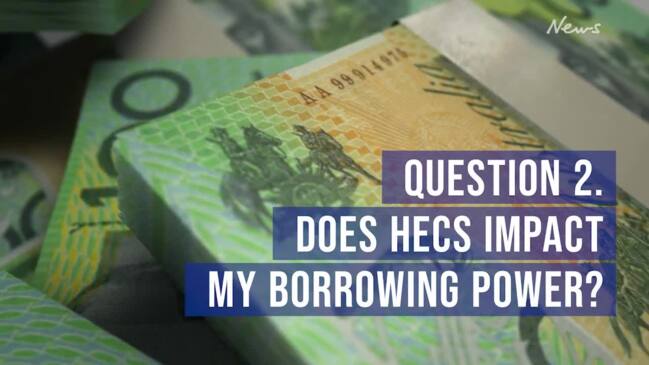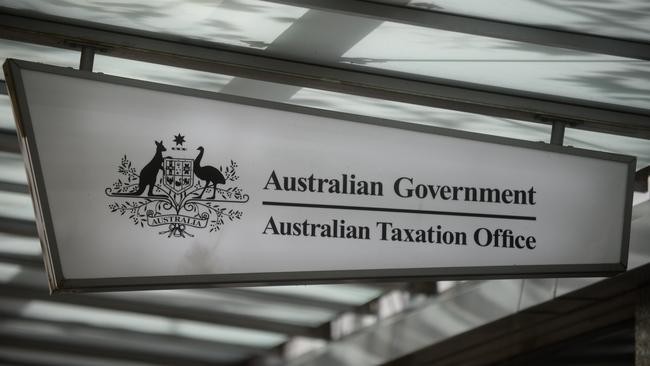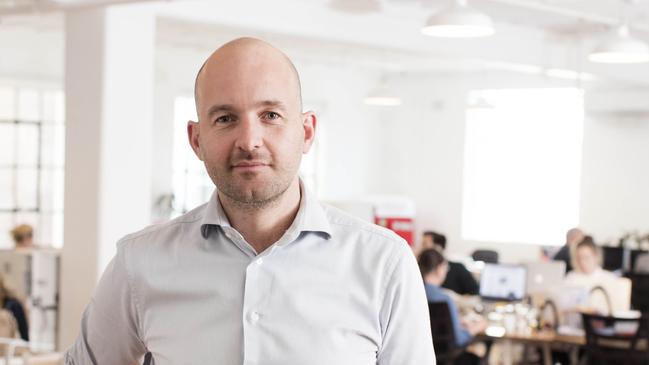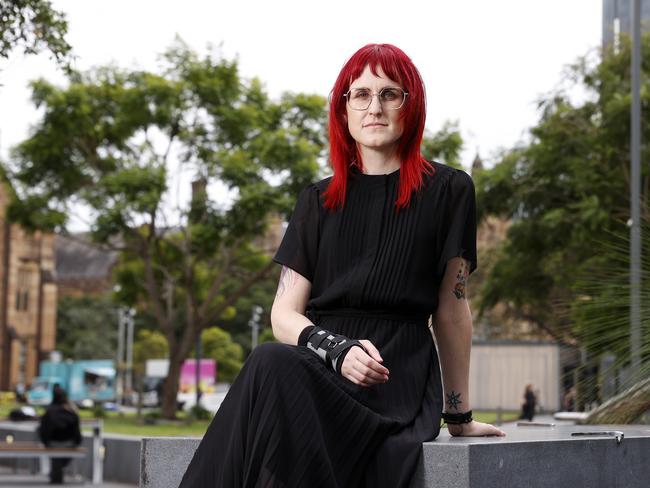Compulsory HECS-HELP payments deducted after mammoth indexation
Taxpayers are set for a rude awakening when they discover that the student loan repayments being deducted from their paychecks won’t save them from having a whopping 7 per cent – or more – whacked on to their debt.

NSW
Don't miss out on the headlines from NSW. Followed categories will be added to My News.
Taxpayers with student loans are set for a rude awakening when they discover that the repayments being deducted from their paychecks all year won’t save them from having a whopping 7 per cent – or more – whacked on to their debt.
For most people, compulsory HECS-HELP repayments are set aside by their employer in each pay cycle, anywhere between 1 per cent of incomes over $47,014 per year, up to 10 per cent for the highest earners.
However, the ATO doesn’t deduct the repayments weekly or even monthly. Instead, the contributions are only deducted after the end of the financial year – two months after indexation is applied.
H&R Block’s director of tax communications Mark Chapman said student loan repayments are withheld from each paycheck to “spread the pain” and avoid ending up with a massive tax bill at the end of the year.
However it “would be useful” if those amounts were instead deducted from HECS-HELP debts regularly, he said.

“It would be good if the ATO did actually apply it to the loan balance immediately, rather than waiting until you’ve actually lodged the tax return and applying it then,” Mr Chapman said.
“Certainly, that would assist everyone in terms of a lower indexation from the 1st of June.”

An ATO spokesperson confirmed compulsory repayments held aside during the 2022-23 financial year will not impact debts indexed on June 1, and said “the income tax return process is completely independent of indexation timing”.
“Until the full financial year picture of an individual is obtained via the tax return process, including in particular non-salary income and deductions, the Compulsory Repayment in respect of a student loan cannot be determined,” they said.
“It would require a legislative change to have withheld (pay as you go) amounts, particularly those withheld for “potential” compulsory repayments, dealt with in a different fashion.”
However voluntary contributions are deducted as soon as they’re processed.
“A voluntary repayment of student loan, if received by the ATO prior to the indexation date (1 June), will reduce the balance on which indexation is calculated,” a spokesperson said.
Australian Taxpayer Alliance president Brian Marlow said “it doesn’t makes sense” that the ATO allows for regular PAYG instalments on tax, but won’t deduct HECS repayments more often.
“It’s a silent tax increase on a new generation of workers paying off their university degrees,” Mr Marlow said.
“Politicians are out there talking about cost of living pressures while simultaneously doing nothing to help people take more of their own money home at the end of the financial year.”
‘BORROWING CLIFF’: NEW THREAT EMERGES FOR FIRST-HOME BUYERS
Would-be first time homebuyers with university degrees are heading towards a “borrowing power cliff”, with their HECS-HELP debt a ticking time bomb that could wipe as much as 20 per cent off a home loan.
Current and former students are facing the highest increase to their loans in a decade, estimated to hit 7 per cent when debt amounts are indexed to inflation.
Modelling undertaken by online mortgage brokers UNO exclusively for The Daily Telegraph shows middle and high income earners paying off $40,000 – $50,000 HECS-HELP debts lose 15 to 20 per cent off the borrowing amount most lenders would pay out.
For example, a person earning $99,000 per annum with a debt of $45,000 could borrow at least $457,724. Without that student loan debt however their borrowing floor increases $528,145, giving them an extra $70,000 – or 15.39 per cent – to play with.
UNO Home Loans founder Vincent Turner said the liability of HECS debt is a “triple whammy” for would-be borrowers, slowing down their ability to save for a deposit and increasing their mortgage insurance and interest rates.
“You’ve got a bunch of people who are going to be held back from participating in property because they have this debt that’s not going away, or in fact might even be getting larger,” he said.
“They’re absolutely going to have their own version of a cliff, but it’s not a mortgage, fixed-rate cliff, it’s a borrowing power cliff.”

Graduates are already shying away from big, financially costly life milestones following last year’s 3.9 per cent loan indexation. Nearly 60 per cent of graduates surveyed by Futurity Investment Group said their HECS debt had impacted their ability to buy a home, and one in three said it had affected their decision to start a family.
CEO Kate Hill said with student loans now impacting mortgage and credit card access, those with debt should consider putting any excess funds towards voluntary repayments.
“In a lot of people’s minds, it’s an interest free loan so it’s left until last. But with the escalation of inflation … debt has accelerated.
“With the escalating price of housing, and we’ve also seen that wage growth has not kept up with inflation … it’s just one more hurdle for people in their 20s and 30s.”

There were 374,785 Australians in the 40-49 age bracket in 2022 still paying off their student loans, accounting for 12.5 per cent of the total number of debtors. Two thirds were women.
40-year-old University of Sydney PhD student Gemma Smart has spent more than 20 years whittling her undergraduate university debt down from $50,000 to $20,000, but recently her efforts have been in vain.
“I paid off a bunch of my HECS because I managed a research centre and worked as a human geographer before I went back to my research … (but) I’ve noticed, everything that I have paid off in the last three years has now been put back on with interest,” she said.
The impact on her financial position is one of the reasons Ms Smart intends to move overseas when she graduates, rather than attempt to stay on in Sydney to work and buy property.
“It’s just kind of devastating to watch something that you have invested time and money in become … a high (financial) risk,” she said.
“Entering Sydney’s real estate market would be incredibly difficult as it is. (HECS debt) is just another thing that adds to a decision to move elsewhere.”





